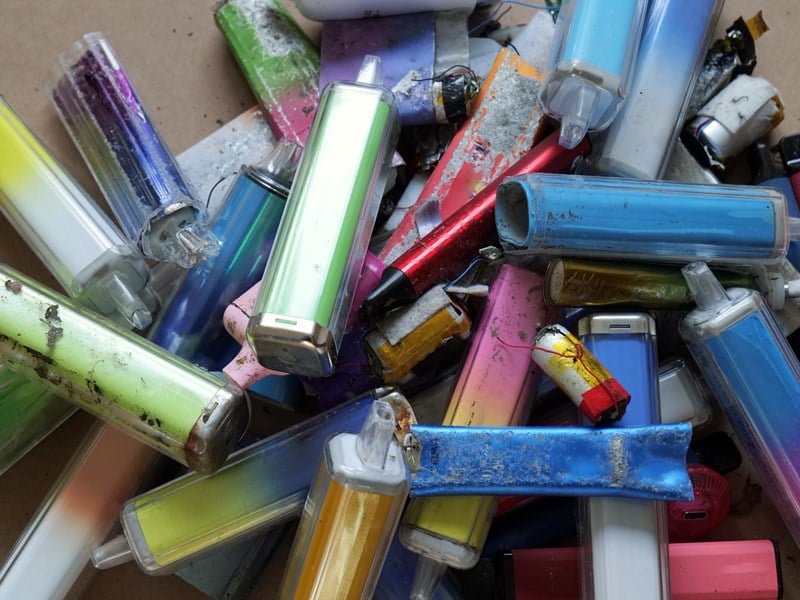- Home /
- News /
- Environment
Vapes adding to a mounting e-waste problem
23 July 2024

Electronic waste contained in e-cigarettes is creating an increasing environmental problem for Victoria, a parliamentary committee has heard.
The Public Accounts and Estimates Committee is inquiring into vaping and tobacco controls in Victoria.
As part of its inquiry the Committee met with representatives of the Environment Protection Authority Victoria to hear about the problem disposable vapes are posing to Victoria’s waste stream.
‘Vapes contain lithium-ion batteries, which are combustible and are an ignition source when improperly handled, meaning that they can cause fires when they are not sorted, separated, handled, or stored appropriately,’ Lee Miezis, Chief Executive Officer of the EPA told the Committee.
But, he says, many people do not know their vapes contain e-waste.
‘Many people probably wouldn't even realise there is an embedded battery within a vape, which is why we see it disposed of in general waste,’ he said.
The lithium-ion batteries are typically sealed inside vapes, making them difficult to separate at end of life.
He said consumers often put vapes in general waste 'because they cannot easily find another disposal pathway’.
Vapes are among the many battery-operated devices causing fires across the state.
“ ‘Many people probably wouldn't even realise there is an embedded battery within a vape, which is why we see it disposed of in general waste.’ ”
Lee Miezis, Chief Executive Officer, Environment Protection Authority Victoria
‘Our fire services tell us that they respond to at least one battery related fire each week in Victoria. These fires present a significant health risk, as well as financial costs to waste management facilities to transportation companies and to communities,’ he said.
Mr Miezis told the Committee it is not possible to know how many of these fires are caused by vapes and how many are caused by other household devices, including the smaller batteries found in everything from electric toothbrushes to earbuds and even children’s shoes with embedded lights, as well as the larger batteries found in consumer items like phones and scooters.
‘The most significant fire that we know that has been confirmed as being caused by e-cigarettes was one in Canberra on the 26th of December 2022,’ he said.
That fire destroyed a waste facility leading to a more than $50 million expense to rebuild it.
The Committee heard that, despite the federal government banning the sale of vapes outside of pharmacies, they would continue to pose a risk to the waste stream, without stronger product regulation.
'For that reason, we think improving manufacturing, import and labelling standards are a critical part of reducing lithium-ion battery and vape related waste and fire risks. Vapes should be designed to be easily dismantled, discharged, and avoid single use,’ Mr Miezis told the Committee.
In the meantime, he said every Victorian is within a 30 minute drive of an e-waste facility and, while not all e-waste facilities are able to manage vapes, consumers should make an effort to locate a facility that can dispose of them safely.
The Committee will finalise its report by November 2024.
The terms of reference, submissions and transcripts of earlier hearings can be found on the Committee’s website.